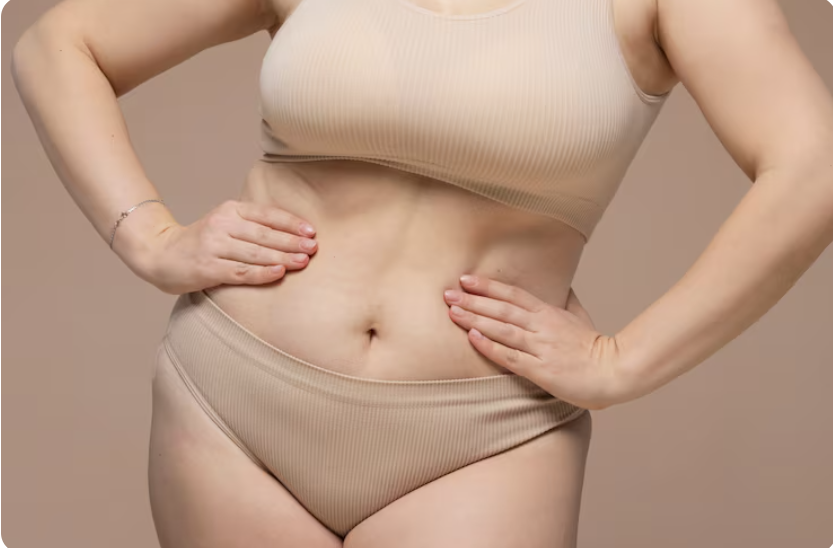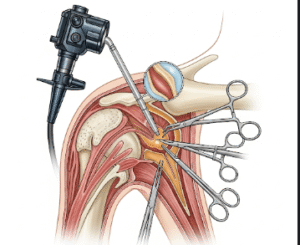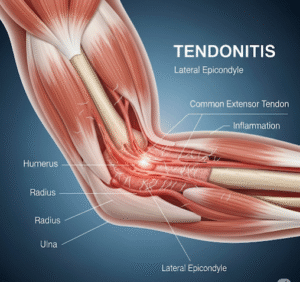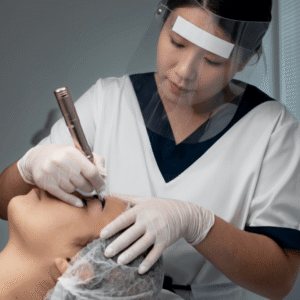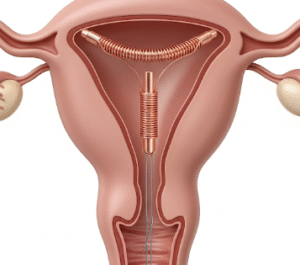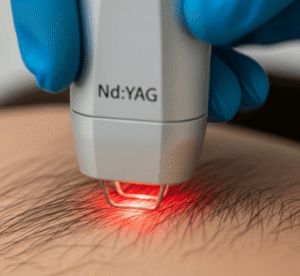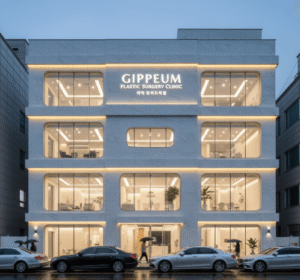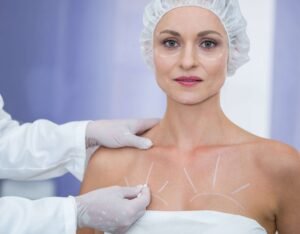What It Is
A full abdominoplasty, also known as a tummy tuck, is a cosmetic surgery that removes excess fat and loose skin from the entire abdominal area (both above and below the belly button) while also tightening weakened or separated abdominal muscles.
This surgery is more extensive than a mini tummy tuck and is especially beneficial for patients with significant skin laxity, muscle weakness, or abdominal wall separation (diastasis recti), often caused by pregnancy, weight fluctuations, or aging.
The result is a flatter, firmer, and more toned midsection, restoring both function and appearance.
Why It’s Done
Patients typically seek a full abdominoplasty for:
- Removal of stretched skin and fat deposits after pregnancy or major weight loss.
- Repair of abdominal muscle separation (diastasis recti) that cannot be corrected with exercise alone.
- Improvement of posture and reduction of back discomfort linked to weakened core muscles.
- A more youthful, defined waistline and improved clothing fit.
Good candidates include:
- Men and women with significant excess skin and/or muscle weakness.
- Women post-pregnancy who have not regained abdominal firmness.
- Patients who have lost substantial weight and are left with loose, hanging skin.
- Individuals at a stable weight and in good health.
Alternatives
- Mini abdominoplasty: For patients with mild skin laxity limited to below the navel.
- Liposuction alone: Removes fat but does not address muscle weakness or loose skin.
- Non-surgical treatments: Radiofrequency, ultrasound, or laser skin tightening may provide minor improvement but are not effective for severe cases.
Preparation
Before undergoing a full abdominoplasty in Korea, patients will:
- Have a detailed consultation to assess skin, fat, and muscle condition.
- Undergo preoperative medical testing (blood tests, ECG, and sometimes imaging).
- Stop smoking and alcohol for at least 4 weeks prior to surgery.
- Avoid blood thinners and certain supplements.
- Arrange for 1–2 weeks of downtime and a support system at home.
How It’s Done
- Anesthesia: Usually performed under general anesthesia.
- Incision: A horizontal incision is made just above the pubic line (hip to hip), positioned low to be hidden by underwear or swimwear. A second incision is made around the belly button to reposition it.
- Skin and fat removal: Excess skin and fat are lifted and removed.
- Muscle repair: Separated abdominal muscles are sutured together for a firmer abdominal wall.
- Navel repositioning: The belly button is repositioned naturally within the tightened skin.
- Duration: 2–4 hours, with some patients requiring an overnight hospital stay.
Recovery
- First week: Swelling, bruising, and tightness in the abdomen are expected. Patients may need to walk slightly bent over for a few days.
- Compression garment: Worn for 6–8 weeks to reduce swelling and support abdominal muscles.
- Drainage tubes: Sometimes placed for a few days to remove excess fluid.
- Return to work: Most patients resume light activities within 2 weeks.
- Exercise: Gentle walking is encouraged early, but strenuous activity and core workouts should be avoided for 6–8 weeks.
- Results: Noticeable improvements immediately after surgery, with final results visible after 3–6 months once swelling resolves.
Possible Complications
- Temporary numbness or sensitivity changes in the lower abdomen.
- Bruising, swelling, or fluid accumulation (seroma).
- Scarring along the lower abdomen (usually hidden by clothing).
- Rare risks: infection, delayed wound healing, blood clots, or asymmetry.
Treatment Options in Korea
Diagnosis
Korean surgeons perform a thorough evaluation of abdominal wall condition, fat distribution, and skin laxity. 3D imaging and simulation may be used to demonstrate expected results and help patients decide between mini and full abdominoplasty.
Medical Treatments
For mild cases, non-surgical skin tightening or liposuction may be suggested, but they are not effective alternatives for patients with significant laxity or diastasis recti.
Surgical or Advanced Therapies
- Full abdominoplasty for patients with extensive skin excess and muscle weakness.
- Combination with liposuction to enhance waistline contouring.
- Extended or fleur-de-lis abdominoplasty for patients with massive weight loss and circumferential skin excess.
Rehabilitation and Support
- Regular follow-up visits to check healing and scar progression.
- Drain management and wound care guidance.
- Scar management therapies (silicone sheeting, laser, or microneedling) to improve scar appearance.
- Comprehensive aftercare services, including detailed instructions and post-op support tailored for international patients.

